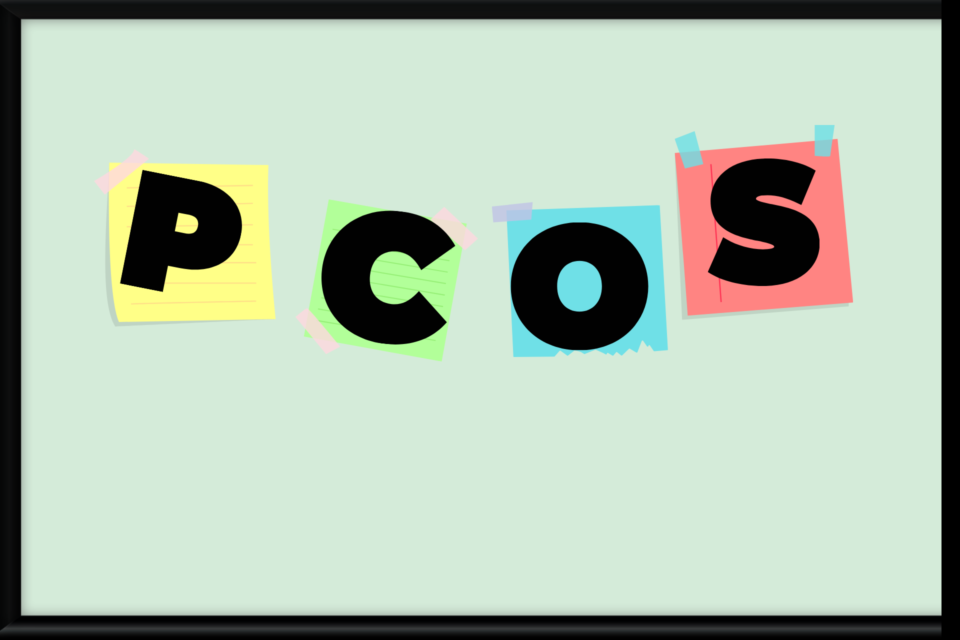When reproductive hormones’ imbalance starts causing problems in the ovaries, a common health problem is caused known as Polycystic Ovary Syndrome (PCOS) or Polycystic Ovarian Syndrome. PCOS affects the normal functioning of the ovaries i.e. to make the egg that is released each month as a part of a healthy menstrual cycle.
As per the results of a large-scale survey conducted across India in 2020, about 16 percent of women respondents between the ages of 20 and 29 years suffered from polycystic ovary syndrome. Polycystic ovary syndrome occurs due to increased incidents of unhealthy eating patterns and irregular exercise.
The triggering causes behind PCOS are the ill effects of unhealthy eating patterns and irregular exercise. Women suffering from PCOS produce a higher amount of male hormones which further lead to irregular periods (women with PCOS get fewer periods than usual) and other infertility issues.
There are other effects too – from abnormal hair growth on the face and body and increasing baldness. When ignored, long-term health problems like diabetes and heart disease start to emerge.
Let’s dive deep into the topic.
PCOS
PCOS is a problem with hormones that affects women during their childbearing years (ages 15 to 44). Between 2.2 and 26.7 percent of women in this age group have PCOS. Many women have PCOS but don’t know it. In one study, up to 70 percent of women with PCOS hadn’t been diagnosed.
Polycystic Ovary Syndrome affects a woman’s ovaries, the reproductive organs that produce estrogen and progesterone — hormones that regulate the menstrual cycle. The ovaries also produce a small amount of male hormones called androgens.
PCOS is a “syndrome,” or group of symptoms that affects the ovaries and ovulation. Its three main features are:
- cysts in the ovaries
- high levels of male hormones
- irregular or skipped periods
In PCOS, many small, fluid-filled sacs grow inside the ovaries. The word “polycystic” means “many cysts.”
These sacs are actually follicles, each one containing an immature egg. The lack of ovulation alters levels of estrogen, progesterone, FSH, and LH. Progesterone levels are lower than usual, while androgen levels are higher than usual.
What causes PCOS?
To date, no concrete reason has been specified that causes PCOS. However, a few reasons contribute to their occurrence.
Genes
PCOS condition can be transferred from generation to generation through genes (more than one).
Insulin Resistance
As per a report by National Center for Biotechnology Information (US), upto 70 percent of women with PCOS have insulin resistance, meaning that their cells can’t use insulin properly.
When cells can’t use insulin properly, the body’s demand for insulin increases. The pancreas makes more insulin to compensate. Extra insulin triggers the ovaries to produce more male hormones.
Obesity is one of the major reasons behind insulin resistance.
Inflammation
Women with PCOS often have increased levels of inflammation in their bodies. Being overweight can also contribute to inflammation. Studies have linked excess inflammation to higher androgen levels
Symptoms related to PCOS
Irregular periods
A lack of ovulation prevents the uterine lining from shedding every month. Some women with PCOS get fewer than eight periods a year or none at all.
Heavy bleeding
The uterine lining builds up for a longer period of time, so the periods you do get can be heavier than normal.
Hair growth
More than 70 percent of women with this condition grow hair on their face and body — including on their back, belly, and chest. Excess hair growth is called hirsutism.
Acne
Male hormones can make the skin oilier than usual and cause breakouts on areas like the face, chest, and upper back.
Weight gain
Up to 80 percent of women with PCOS are overweight or have obesity.
Male pattern baldness
Hair on the scalp gets thinner and may fall out.
Darkening of the skin
Dark patches of skin can form in body creases like those on the neck, in the groin, and under the breasts.
Headaches
Hormone changes can trigger headaches in some women.
Also read: 13 Common Migraine Triggers you need to know about
Diet and lifestyle tips to treat PCOS
- Treatment for Polycystic Ovary Syndrome usually starts with lifestyle changes like weight loss, diet, and exercise. Losing just 5 to 10 per cent of your body weight can help regulate your menstrual cycle and improve PCOS symptoms. Weight loss can also:
- Improve cholesterol levels
- Lower insulin
- Reduce heart disease and diabetes risks
- Any diet that helps you lose weight can help your condition. However, some diets may have advantages over others. Studies comparing diets for PCOS have found that low carbohydrate diets are effective for both weight loss and lowering insulin levels.
- A low glycaemic index (low GI) diet that gets most carbohydrates from fruits, vegetables, and whole grains helps regulate the menstrual cycle better than a regular weight loss diet.
- A few studies have found that 30 minutes of moderate-intensity exercise at least 3 days a week can help women with PCOS lose weight. Losing weight with exercise also improves ovulation and insulin levels
- Exercise is even more beneficial when combined with a healthy diet. Diet plus exercise helps you lose more weight than either intervention alone, and it lowers your risks for diabetes and heart disease.
(Source)




